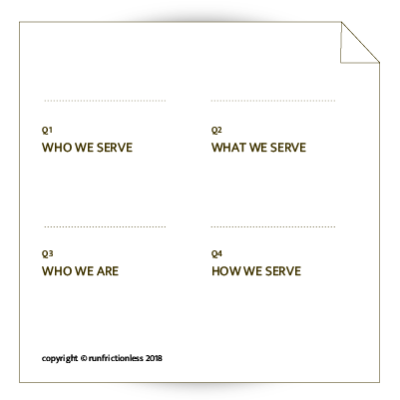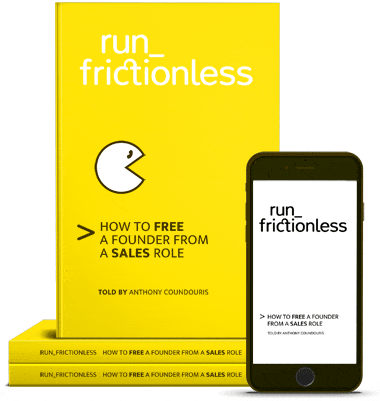
The 4Qs decision-making framework explained in under a minute
>
The 4Qs explained in under a minute
Suppose you’re given the task to create the company’s sales collateral. The website, brochures, and videos that convince a customer to buy your company’s product. You’re given a limited time and a budget to work with.
For simplicity, I am going to refer to sales collateral as ‘words and pictures’.
You copy one another
In 2016, we surveyed founders from 100 startups across the globe. They told us their most common source of inspiration for words and pictures came from their personal experience and what their competitors publicized.
In the same year we conducted a sales friction test on an group of competitors from the U.K. known as ‘umbrella companies’. We discovered all five mimicked the same interaction when contacting a customer for the first time. In fact, each competitor even called this interaction by the same name. They called it a “pay illustration”.
This partly explains why so many companies look and sound the same. They perpetually copy one another, until, over time, all the competitors in an industry appear homogenous.
4Qs is key to unique words and pictures
Customers judge the merits of a company based on the company’s words and pictures. If the words and pictures are similar to another startup, the customer deems the company a follower.
So words and pictures matter. The next time you need to craft words and pictures, ask yourself these three questions before getting started.
If you cannot answer each question intelligently, you can benefit from the 4Qs.
4Qs framework at a glance
run frictionless helps founders free themselves of a sales role, using a decision-making framework called the 4Qs. In order to scale the founder, staff need to think like the founder.
The 4Qs takes what you know intuitively and organises this knowledge into four quadrants, hence the Four Quadrants (4Qs for short).
The Quadrants are interdependent. The decisions you make to one Quadrant will affect the other three.

Let's take a closer look
Q1
Can you describe customers you serve today, serve tomorrow and never serve? If you have made the mistake of serving everyone, you’ll need to trim your customer base to a few you can serve with the least friction.
Q2
Do you know the exact functions and limits of the product? 1 in 2 startups I talk to do not. Before drafting benefits, you’ll need a grasp of what the product can do and its limits.
Q3
Do you have a corporate identity? Or are you working with a logo only? Without a visual language, your words and pictures will be bland when rendered.
Q4
Can you boil customer creation down into a handful of interactions? Example, how many interactions does it require to create a customer? How does it feel to become a customer?

run frictionless
now for only US$995





